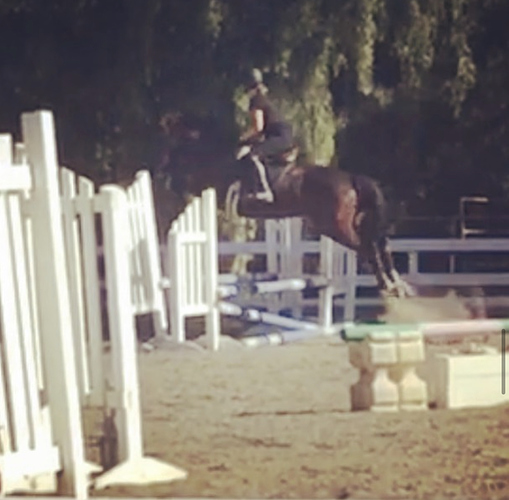I haven’t read the other replies, so this may have been touched on already, but you are jumping way ahead of your horse and throwing your weight forward instead of letting it stay down in your feet. You need to let the horse jump up to you, not try to jump for her by throwing your upper body forward. When you do this, your leg slides back, and you have no base of support (and therefore no balance).
Practice on the flat by trotting 10 steps standing straight up (practice this first, so you can find a secure position without using the reins or neck for support) then sinking into two point (no hands!) for 10 steps without your seat touching the saddle, then rising back up for standing for 10, and so on. Feel the place where your leg wants to be in order to accomplish this- it should be steady, still, and centered under your body. That is where your leg needs to be while jumping. If you can’t maintain this exercise, or trot and canter around in two point without touching the mane or neck, then your lower leg is not yet secure enough to jump.


